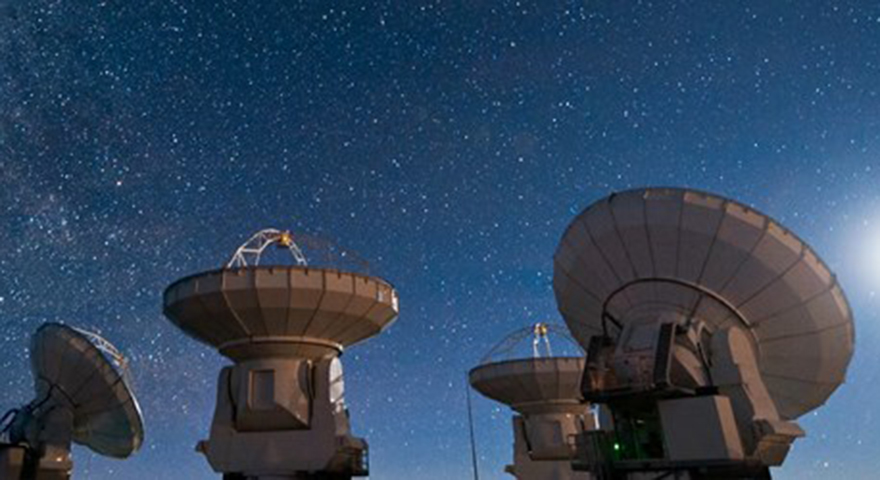Resolving the origins of the universe
 Photo by José Francisco Salgado. Note that the image is conceptual and does not represent the actual CLASS telescopes.
Photo by José Francisco Salgado. Note that the image is conceptual and does not represent the actual CLASS telescopes.
In a groundbreaking project, scientists from Johns Hopkins University along with NASA and other partners are jointly investigating the mystery of the origins of the Universe. Osprey® controlled expansion alloys from Sandvik play an important role in the project by providing components that support the vital but fragile detectors at the heart of the advanced telescopes.
Astrophysicists from Johns Hopkins University in Baltimore, Maryland, have designed four advanced telescopes as part of the Cosmology Large-Angular Scale Surveyor, or CLASS. These are placed 5,200 meters above sea level in the Atacama Desert in Chile.
Our involvement from Sandvik stretches far beyond being a material supplier
The telescopes map the cosmic microwave background (CMB) polarization over 70% of the sky.
"The researchers aim is to look back over 13 billion years to a time shortly after the Big Bang in an effort to better understand the origins of the Universe and in particular to test the theory of inflation," says Dr. Andrew Coleman, Head of Sandvik business unit Powder.
The purpose is to look for the faint imprint of gravitational waves from the first very energetic moments after the Big Bang when particles had energies 13 orders of magnitude higher than our largest particle accelerators can create.
Discovering the Big Bang, down to the smallest detail
Extremely sensitive detectors detect tiny fluctuations in the CMB, the faint afterglow of energy released during the first trillionth of a trillionth of a trillionth of a second of the universe's existence.
To increase their sensitivity, the detectors are cooled down to 0.1 K (minus 273.15°C), barely above absolute zero, by cryogenic helium refrigerators. Each detector is mounted on a plate that works both as a mechanical support and as an interface between the detector and a copper feed-horn array that focuses microwaves onto the detector.
Due to the extreme temperature, the coefficient of thermal expansion (CTE) of the mounting plate must closely match that of the detector as it is cooled down. Osprey® CE7F controlled expansion alloy has been selected for these critical parts as it has the required CTE match down to these extremely low temperatures, whilst still providing the necessary mechanical properties.
More than a material supplier
"Our involvement from Sandvik stretches far beyond being a material supplier as we not only produce this unique alloy but also machine it to supply the precision mounting plate itself. We worked on a new design with Johns Hopkins University that revolutionizes the existing design by eliminating the copper feed-horns completely and instead have a single piece machined from our CE7F alloy," says Dr. Coleman.
Alloy CE7F is enabling innovative packaging architectures for the CLASS microwave detectors
Dr. Tom Essinger-Hileman, Assistant Research Scientist, Johns Hopkins University is very satisfied with the Sandvik solution.
"With its unique combination of properties, the Sandvik alloy CE7F is enabling innovative packaging architectures for the CLASS microwave detectors. The ability to combine the thermo-mechanical interface of the detectors with complicated optical-coupling structures in a single part simplifies the CLASS focal plane design and makes it more robust," he says.